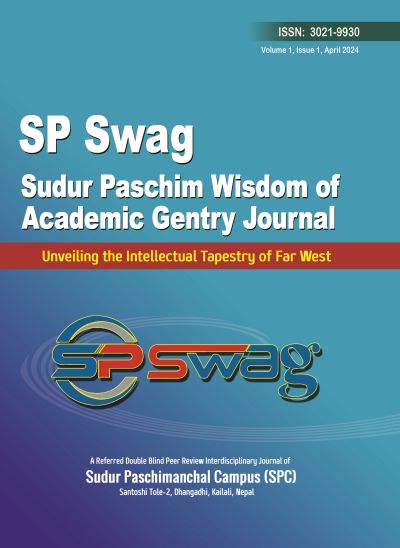Impact of Capital Adequacy on Profitability of Commercial Banks in Nepal
Keywords:
Capital adequacy, Profitability, Commercial Banks, Nepal, CCR, SCR, CAR, ROE, ROA, NPMAbstract
Purpose: This study aims to assess the impact of capital adequacy on the profitability of selected commercial banks in Nepal. It specifically measures and evaluates the capital adequacy ratios and profitability ratios of the selected Nepalese commercial banks.
Methods: The research employs descriptive and casual-comparative research designs, using a sample of one government-owned bank and one private sector bank in Nepal. The study analyzes CCR, SCR, and CAR to measure capital adequacy and ROE, ROA, and NPM to measure profitability.
Findings: The study finds that the capital position of the commercial banks is adequate according to the capital adequacy framework 2015 and unified directives number one of NRB. However, profitability ratios of the sample Nepalese commercial banks are high but decreasing over the past 10 years. The correlation between ROE and capital adequacy variables is very weakly positive, while the correlation between NPM and capital adequacy variables is weakly positive. However, the correlation between ROA and capital adequacy variables is weakly negative. The regression analysis finds insignificant results, indicating that capital adequacy has not made any significant impact on profitability.
Value: The study provides insights into the impact of capital adequacy on the profitability of commercial banks in Nepal, contributing to the understanding of the banking sector in Nepal. It also highlights the decreasing trend in profitability ratios and the insignificant impact of capital adequacy on profitability.
Downloads
Downloads
Published
How to Cite
Issue
Section
License
Copyright (c) 2024 The Author(s)

This work is licensed under a Creative Commons Attribution-NonCommercial 4.0 International License.
This license enables reusers to distribute, remix, adapt, and build upon the material in any medium or format for noncommercial purposes only, and only so long as attribution is given to the creator.




